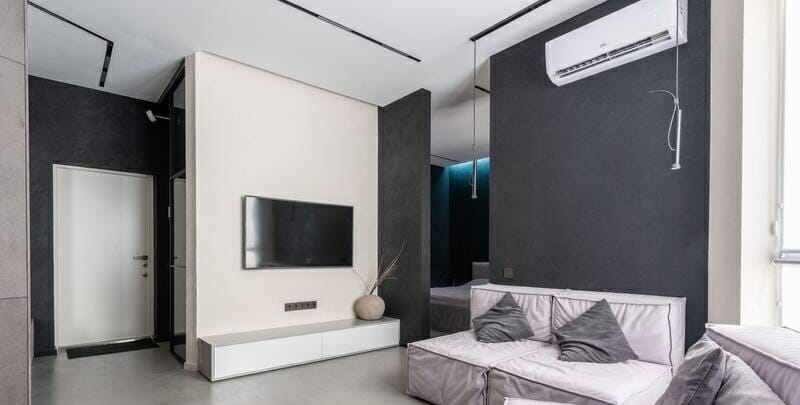
Is It Cheaper to Run a Split System Air Conditioner?
Split system reverse cycle air conditioning gets many Australian homes through searing hot summers and bitingly cold winters.
It boasts the ability to provide much-needed cooling relief throughout the warmer months of the year, and equally as essential warmth for when temperatures drop.
Many homeowners opt for split systems as their preferred type of air conditioner due to their versatility and cost effectiveness. But just how economical is it to run a split system air conditioner? How does it compare to other air conditioning units?
Let’s explore all the points to consider when it comes to buying a split system air con.
Different Types of Split Systems
You’re certainly spoiled for choice when it comes to the matter of choosing the right split system for your home. There are numerous different types of split system air conditioners on the market.
Among the choices you will need to make to determine the right type of system for you, are:
Do you want a single split system that heats or cools just the one room, or a multi head system that controls the temperature of multiple rooms at the one time?
Do you want the ability to just cool a room, or have the choice to heat or cool with a reverse cycle unit?
Once you’ve decided between a single or multi head split system, and whether you want a cooling or heating and cooling system, you can then consider the particular model you want.

How Does a Split System Differ from Ducted?
The two most common types of air conditioner are the split system and the ducted air. The biggest differences between the two are in the way they cool the air and distribute it throughout your home.
Split systems consist of two main units; one located indoors and the other outdoors. The outdoor component draws outside air and pumps it through the compressor. This transforms the hot external air into cold air, or cold air into heated air.
The system then pumps the air throughout the house through the internal unit which is attached to the wall.
Two key parts make up a ducted system. One is the indoor unit located in the roof space, and the other is an outdoor unit.
The two work in conjunction with each other to generate cooled or heated air with the assistance of a refrigerant gas. The unit then pumps the air throughout the house via ducts and vents installed in selected zones in the home.
The Benefits of Split System Air Conditioning
Split system air conditioners offer many benefits for homeowners. These include:
- Easy installation
- Outdoor unit can be easily concealed
- No need for windows
- Minimal maintenance
- Available in reverse cycle or cooling only options
- Energy efficiency
- Low cost
It’s best to install the indoor and outdoor units of a split system air conditioner in close proximity to each other. If the distance between the two begins to get too great, then installation costs may start to climb.

Factors Affecting Split System Air Con Running Costs
Split system air conditioners are considered to be among the most cost-effective air conditioning systems for the home. There are numerous factors that can impact on the running costs of split systems. Among them are:
- The unit’s kW capacity
- The size of the space that the unit is heating or cooling (single room or whole house?)
- Whether or not it has an inverter
- The temperature that you set the air conditioner to
- Usage habits, including the length of time you run the unit
- The energy rating of the air conditioner
- Whether you regularly or rarely maintain and service the unit
- There are additional variables, not directly attributable to the unit itself, that can affect the heating and cooling costs.
The most influential factors can include the temperature outside the house, whether there is sufficient insulation, and if the windows are opened or closed.
What Makes a Split AC System So Cost Effective?
When it comes to air conditioner running costs, how does a split system unit weigh up against ducted air conditioning systems? Which option will do best by you when the electricity bill arrives? Can only split system air conditioners offer this cost efficiency?
Not only is it among the most energy efficient options, but it is among the best system options for reducing running costs and saving on your power bills. Most of these systems are reverse cycle, meaning they having heating capabilities along with cooling.
The energy efficiency of your aircon unit will play a crucial role in determining its running costs. Efficiency is a measure of how much heating or cooling energy can be produced from a single unit of thermal energy. As the Australian Government’s Heating and Cooling website states, a reverse cycle split system produces three to six times as much energy from one unit of electrical energy.
With ducted systems, there is high potential for gaining or losing cool or warm air through the ducts. This can make your home draughtier, which means your air conditioner may need to work harder to heat or cool your room, thus affecting its energy efficiency.
The ability to install individual split system units in separate rooms means that you have better climate control throughout the home. Not using a particular room that you’ve installed air conditioning in? You simply don’t need to turn it on in that room.
Compared to certain ducted air con systems that don’t have the ability to control specific zones at any given time, it certainly strengthens the case for split systems providing optimal energy efficiency.

All in All …
The Australian Energy Foundation suggests installing several split system air conditioners throughout the house instead of a single ducted system for many reasons including cost (upfront, installation and running costs), flexibility and energy efficiency.
For all your air conditioning installation, servicing and repair needs, contact Metropolitan Air Conditioning today. We can install, service or repair all the best brands, including ActronAir, AquaMAX, Braemar, Carrier, Fujitsu, Mitsubishi Heavy Industries, Mitsubishi Electric, Rinnai and many others.
Please note: This information is provided for advice purposes only. Regulations differ from state to state, so please consult your local authorities or an industry professional before proceeding with any work. See our Terms & Conditions here.
Published: 2022-09-15

































